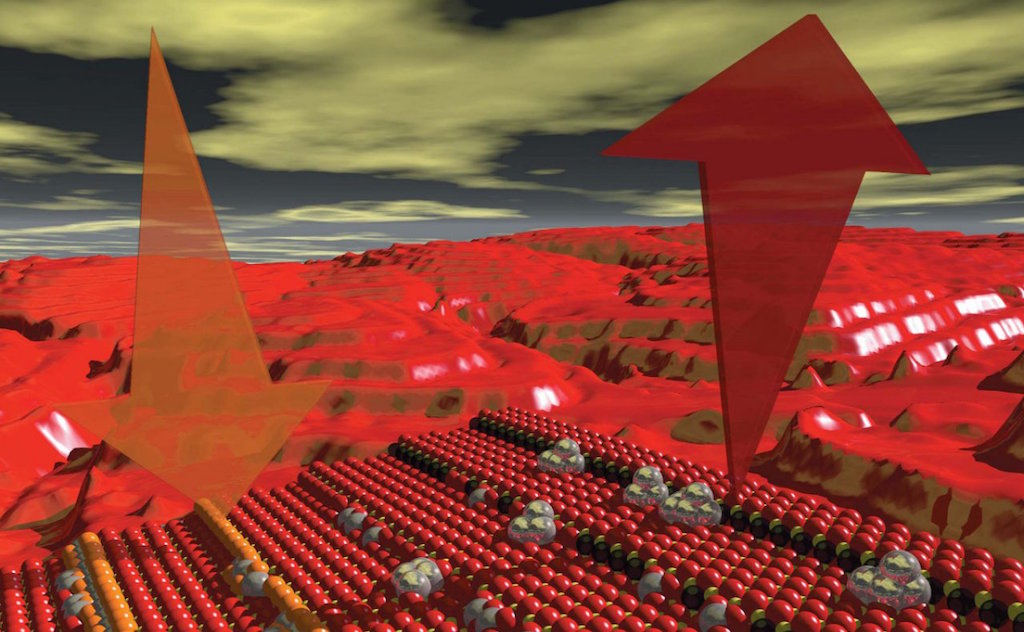Oxidation atmosphere extends the catalyst lifetimes
|The cover of a leading chemical journal, The Journal of Materials Chemistry A highlighted a study by scientists from the Faculty of Mathematics and Physics in Charles University, Prague, identifying, at the atomic level, the mechanisms contributing to the long-term stability and high activity of industrially relevant catalysts.
The structure of the catalysts employed in chemical production, environmental applications or in the conversion of energy from renewable sources often comprises precious metal nanoparticles supported on oxide substrates. Catalyst operation at high temperatures is accompanied with a non-desired effect of coarsening. To minimize their surface energy, precious metal nanoparticles merge into larger particles like water droplets on a fogged window. With increasing particle size, however, their catalytic activity is decreasing, and the coarsening can ultimately result in the catalyst deactivation.
Experimentalists from the Charles University together with theoreticians from the Institute of Materials of the Italian National Research Council (CNR-IOM) and from CERIC, have been investigating the possible strategies for avoiding the deactivation using a reverse process, so-called redispersion. On suitable substrates and under suitable chemical conditions a new energetic state of the catalyst can be achieved, where small nanoparticles become energetically more favorable.
The highlighted research explains the mechanism of redispersion at the atomic level in the industrially relevant catalyst Pt on CeO2 (ceria). It turns out that energetically the most favorable configuration of Pt in an oxidizing atmosphere are the smallest achievable objects – isolated atoms of Pt bonded at surface defects of CeO2 and to excess oxygen atoms.

Image reproduced by permission of Josef Mysliveček and The Royal Society of Chemistry from J. Mater. Chem. A, 2019, 7, 13019-13028, https://doi.org/10.1039/C9TA00823C
Application of oxidizing atmosphere thus triggers dissolution of Pt nanoparticles and extended lifetime of the catalysts. It is interesting to note that the isolated surface bonded Pt atoms are inactive for a range of chemical reactions. In these cases the application of the oxidizing atmosphere may represent a technological step for setting up the optimal size of Pt nanoparticles and for maximizing the catalyst activity.
The research has been conducted in the frame of the CERIC internal research project CEROP.
(Source: Faculty of Mathematics and Physics, Charles University in Prague)



